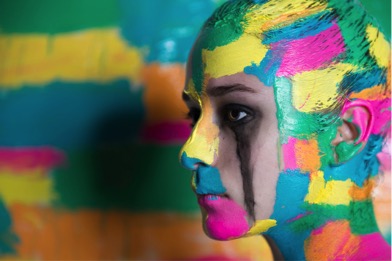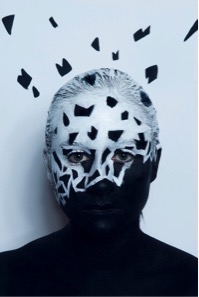 According to a 2004 press release by “The Public Agenda,” 54% of young people in the US would choose sports over all other extra-curricular activities while only 36% would choose visual or performing arts. In the decade since, the percentage of young athletes has risen while simultaneously numbers of young artists plummeted. At my own small high school of 55, about 30 girls are serious about sports in that they are on more than one team or are a high-performing single-sport athlete, while only 10 are somewhat serious about the arts – myself included. This disparity effectively illustrates the lack of significance visual and performing arts play in high schools and young people’s lives as a whole.
According to a 2004 press release by “The Public Agenda,” 54% of young people in the US would choose sports over all other extra-curricular activities while only 36% would choose visual or performing arts. In the decade since, the percentage of young athletes has risen while simultaneously numbers of young artists plummeted. At my own small high school of 55, about 30 girls are serious about sports in that they are on more than one team or are a high-performing single-sport athlete, while only 10 are somewhat serious about the arts – myself included. This disparity effectively illustrates the lack of significance visual and performing arts play in high schools and young people’s lives as a whole.
Interestingly, however, when it comes to support and expression for individuals suffering from mental illnesses, the arts are far more commonly employed. Looking at treatment programs alone, art and music therapies are highly regarded and widespread techniques used to treat illnesses ranging from addiction to eating disorders to grief to anxiety to ADD/ADHD to dementia.
 In my own experience with both visual and performing arts, I have found the culture particularly open and accepting of issues of mental health on both the broad and personal level. When participating in a summer studio program at a Boston regional children’s theatre, we spent a significant amount of class time opening up to each other about personal struggles and discussing techniques to incorporate our own issues of mental health into our acting. Similarly, while studying for a summer at SVA (The School of Visual Arts) in New York City, I found myself surrounded by individuals who openly struggled with mental illnesses such as depression and eating disorders. Because everyone was so candid about their personal lives, these illnesses were normalized and helped students who might otherwise have remained in their shell, open up to their peers.
In my own experience with both visual and performing arts, I have found the culture particularly open and accepting of issues of mental health on both the broad and personal level. When participating in a summer studio program at a Boston regional children’s theatre, we spent a significant amount of class time opening up to each other about personal struggles and discussing techniques to incorporate our own issues of mental health into our acting. Similarly, while studying for a summer at SVA (The School of Visual Arts) in New York City, I found myself surrounded by individuals who openly struggled with mental illnesses such as depression and eating disorders. Because everyone was so candid about their personal lives, these illnesses were normalized and helped students who might otherwise have remained in their shell, open up to their peers.
On the other hand, watching my sister – an elite athlete pursing Division 1 college recruitment – participate in a variety of school and club teams, I have not noticed or heard about the same culture of acceptance. Because sports, unlike the arts, do not inherently serve as a form of personal expression, the topic of mental illness becomes taboo and is both not discussed and looked down upon.
I think that it is precisely this ability of the arts to function as a means of expressing individuals’ emotions that makes it so therapeutic and supportive of mental illnesses. This past spring, every senior at my school was asked to do an independent project. I decided to continue the work I had been doing in my Portfolio art class in order to have a full exhibition to present at the end of the year. A close friend of mine, Sarah Bradley, who will be studying art for the next four years at the Pratt Institute in Brooklyn, and I worked together to create a series on the under-discussed yet pervasive presence of mental illness at our high school. We created pieces that addressed the raw emotions of depression, anxiety, anorexia, and more. In fact, the three images throughout this article are a series of work I did using Sarah as my canvas to broach the subject of depression specifically. When presenting our final exhibition, both Sarah and I received an overwhelming amount of positive feedback from members of our community, including students, teachers, and parents, about how necessary our work was and how important it is to show other teenagers that struggling with mental health isn’t wrong. I had many peers ask if they could model for future work I did on the human body and discuss how they hope to use art – whether visual, theatrical, or musical – in the future to explore mental illnesses.
 The fact that arts are so often overshadowed by the rising athletic culture and push for young people to participate in sports, is sadly causing them to be a severely underemployed method of expressing and discussing a diverse array of mental health topics. However, the community’s response to my and Sarah’s work provided me with some hope that arts may be able to better serve young people in the future.
The fact that arts are so often overshadowed by the rising athletic culture and push for young people to participate in sports, is sadly causing them to be a severely underemployed method of expressing and discussing a diverse array of mental health topics. However, the community’s response to my and Sarah’s work provided me with some hope that arts may be able to better serve young people in the future.
Now I am not trying to say that the arts are superior to sports or that students should pursue arts as opposed to sports; rather, I am hoping to break down the binary between the two in order to prove that arts should be just as fundamental to young people’s academic and extra-curricular lives as athletics. Arts effectively provide an emotional outlet for individuals to explore themselves and discuss hard subjects without requiring words. While sports, conversely, provide a physical outlet to get out of one’s own head. Thus, the two complement rather than oppose each other. So, if the arts so effectively accompany athletics by providing a form of support for young people suffering from mental illness or simply existing in the high pressure world of today, why are they so absent from high school curriculums and teens every-day lives? Let’s work together to remove arts and athletics from their current binary and rebalance their roles in children, teens, and adults lives.
